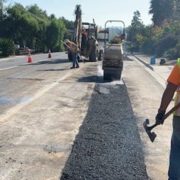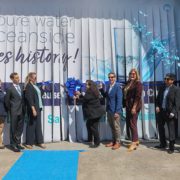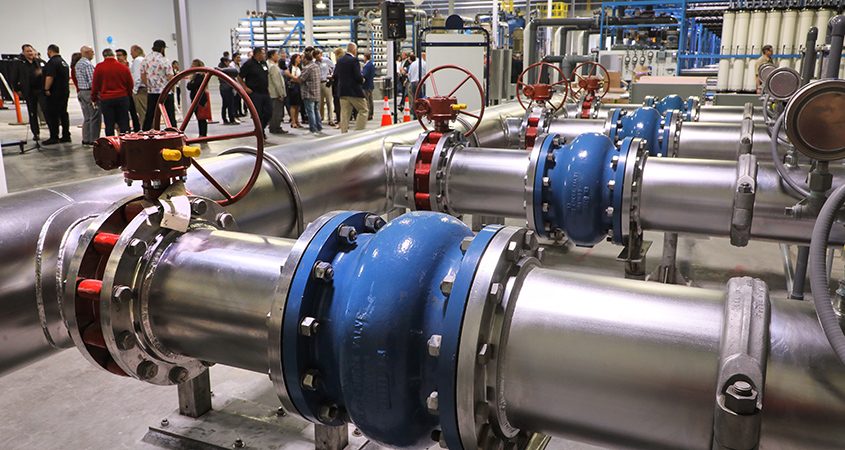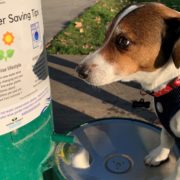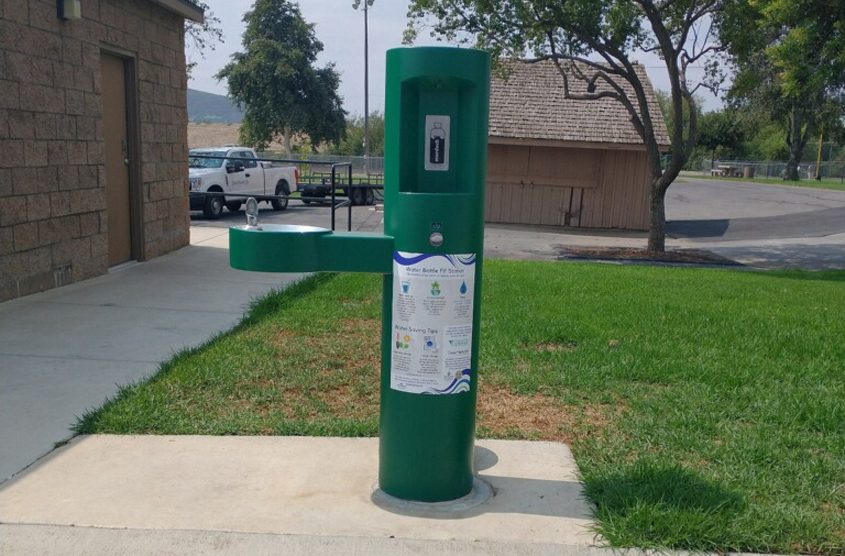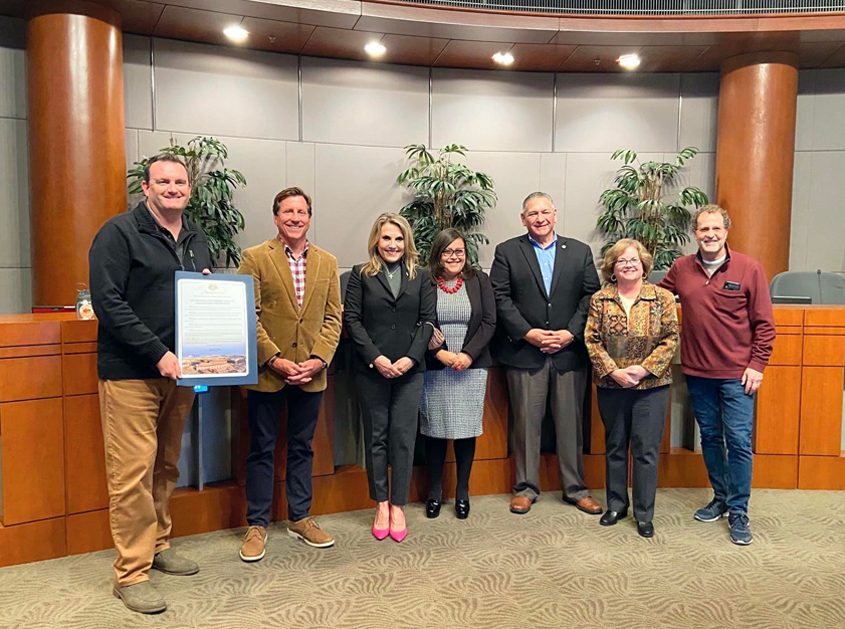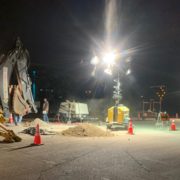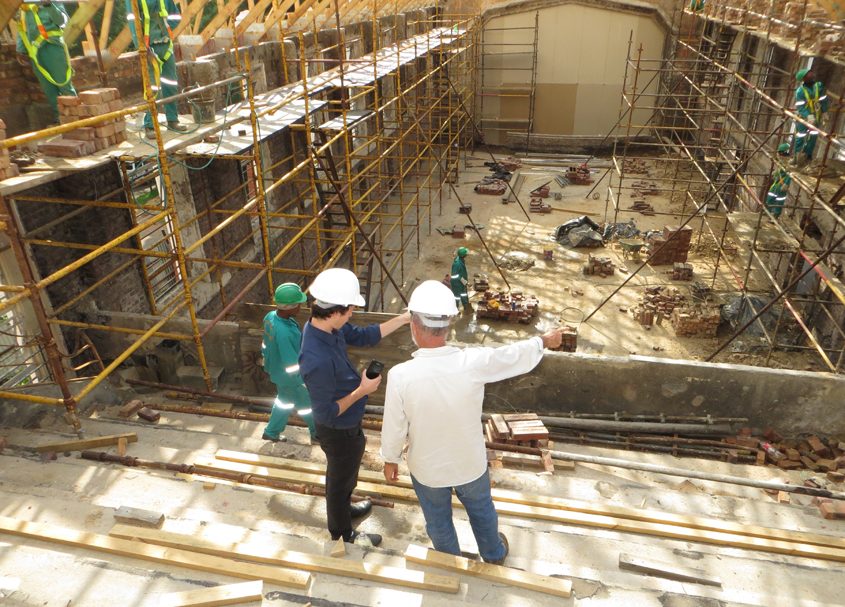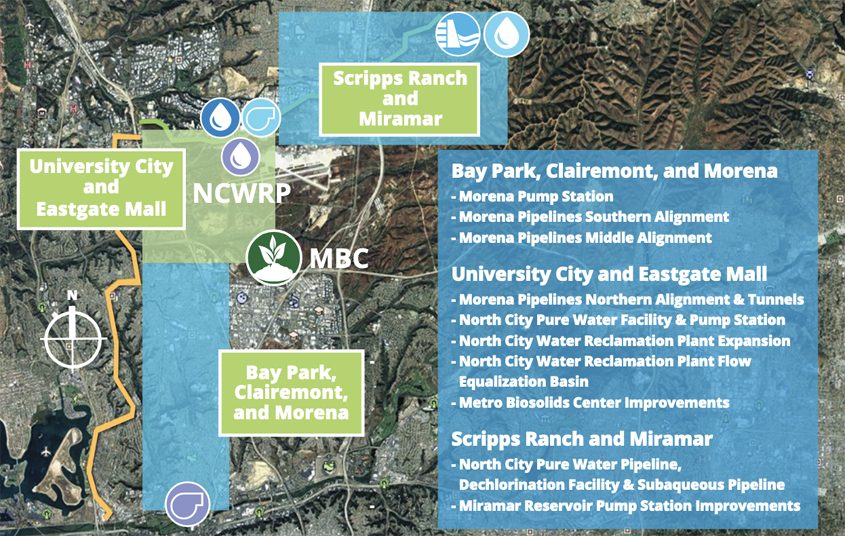Manchester Pipeline Projects Continue with Installation of Recycled Water Pipeline
Olivenhain Municipal Water District is beginning construction this week on a new recycled water pipeline in Encinitas along Manchester Avenue and South El Camino Real from Via Poco to Tennis Club Drive. Once complete, customers connecting to this new pipeline will irrigate with recycled water, which will reduce demand for imported potable water by more than 10 million gallons every year.
Recycled water is a sustainable water source that reduces the region’s dependence on imported water. OMWD is currently meeting approximately 14% of its total water demands using locally supplied recycled water for irrigation.
Recycled water pipeline
“Recycled water is a critical tool in our effort to diversify our water supply and reduce the impacts of drought,” said OMWD Board President Larry Watt. “By converting from potable to recycled water for irrigation, this project has become yet another example of how we can significantly reduce our potable water consumption.”
This new pipeline is an element of the larger North San Diego County Regional Recycled Water Project — a collaborative effort among nine North County agencies that coordinate across jurisdictional boundaries. The water that OMWD will deliver through the new pipeline is produced at San Elijo Joint Powers Authority’s water reclamation facility in Cardiff.
Cost-effective for water ratepayers
OMWD has aggressively sought grant funding for this project to make it cost-effective for ratepayers. The efforts have been successful, with OMWD achieving $1,350,000 from California’s Department of Water Resources for two separate segments of the pipeline, and approximately $400,000 from the U.S. Bureau of Reclamation’s Title XVI Water Reclamation and Reuse Program.
The project is expected to be completed in 2023 and progress updates can be found at www.olivenhain.com/projects and by following OMWD on Facebook and Twitter.
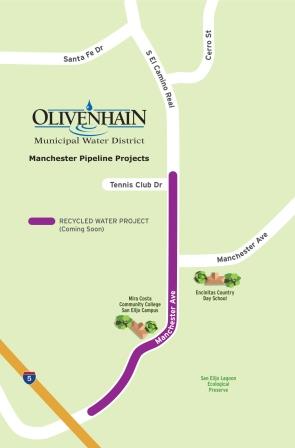
Manchester Avenue potable water pipeline replacement project completed
Earlier this year, the Olivenhain Municipal Water District completed the Manchester Avenue Potable Water Pipeline Project. In total, 3,700 linear feet of aged potable water pipeline was replaced along Manchester Avenue, Rancho Santa Fe Road and Encinitas Boulevard.
(Editor’s note: The Olivenhain Municipal Water District is one of the San Diego County Water Authority’s 24 member agencies that deliver water across the metropolitan San Diego region.)

